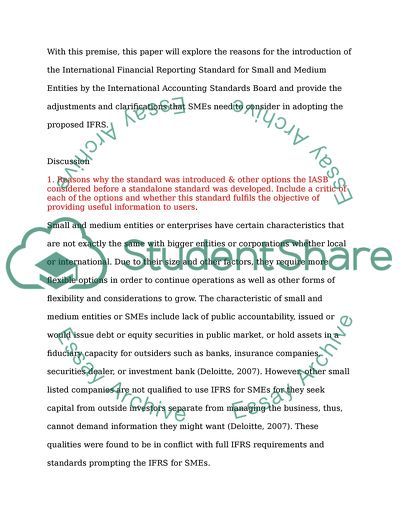Cite this document
(“International Financial Reporting Standard for Small and Medium Essay”, n.d.)
Retrieved from https://studentshare.org/finance-accounting/1437003-international-financial-reporting-standard-for-small-and-medium-entities-reasons-and-considerations-for-adoption
Retrieved from https://studentshare.org/finance-accounting/1437003-international-financial-reporting-standard-for-small-and-medium-entities-reasons-and-considerations-for-adoption
(International Financial Reporting Standard for Small and Medium Essay)
https://studentshare.org/finance-accounting/1437003-international-financial-reporting-standard-for-small-and-medium-entities-reasons-and-considerations-for-adoption.
https://studentshare.org/finance-accounting/1437003-international-financial-reporting-standard-for-small-and-medium-entities-reasons-and-considerations-for-adoption.
“International Financial Reporting Standard for Small and Medium Essay”, n.d. https://studentshare.org/finance-accounting/1437003-international-financial-reporting-standard-for-small-and-medium-entities-reasons-and-considerations-for-adoption.


